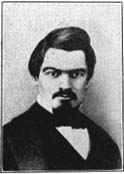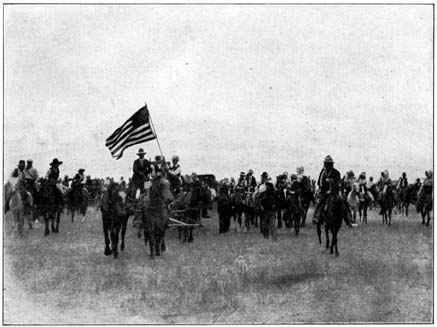|
NEBRASKA TERRITORY CHAPTER VIII
Gov. Francis Burt The territorial life of Nebraska began with the arrival of Governor Francis Burt, of South Carolina, who arrived at Bellevue October 7, 1854, took his official oath of office October 16, and died October 18. Thomas B. Cuming, of Michigan, had been appointed Secretary of State and became acting governor upon his death. There were a score of pressing public questions at the threshold of the new territory. The governor was given authority by law to take a territorial census, to divide the territory into legislative districts, to call an election for members of the first territorial legislature and to fix the place where they should hold their first session. By treaty with the Omaha and Otoe Indians in April, 1854, while the Nebraska-Kansas bill was yet pending in Congress, the United States had acquired title to Nebraska land fronting on the Missouri river and extending west about one hundred miles. This was not yet surveyed, but was open for white settlement and adventurous spirits swarmed across the river all the way from Rulo to Niobrara, to locate townsites and take their pick of choice tracts of land. Council Bluffs, Iowa, was then a town of about two thousand people, the largest place on the Missouri river opposite the Nebraska shore. Enterprising citizens of Council Bluffs had already driven stakes, in the year 1853, on the Nebraska hillside directly opposite their town. In 1854 the townsite and ferry company began booming the new location as the future capital of Nebraska and the river crossing of the Pacific raliroad (sic). In this work they had of course the active assistance of the entire population of Council Bluffs who planned thereby to make their town the real terminus and departure point for the Pacific coast. |
Gov. Thomas B. Cuming and Pawnee Indian Agency, the site of the Presbyterian mission church and school, the location of the first newspaper,--the Nebraska Palladium, printed on Nebraska soil, the headquarters of the fur trade and the residence of the acting governor and other territorial officers. |
to current events in these words: "We stand in the center of this great confederacy. Our fellow citizens are brothers from nearly every state. In our admission geographical lines were erased between the north and the south. Let us institute no line of demarcation within our territorial boundaries, separating communities of embittered feelings. Let mutual concession and conciliation characterize our public acts, so that tranquility and satisfaction may the more speedily prevail over the conflict of local interests." |
 |
 |
 |
 |
|
@ 2002 for the NEGenWeb Project by Pam Rietsch, Ted & Carole Miller |
|||


